How to Open an EMZ File on PC or Mac
Method 1 of 3:
Opening an EMZ File in MS Office
-
 Open an MS Office program like Word or PowerPoint.
Open an MS Office program like Word or PowerPoint.- You can find this in either your Start Menu or Finder
 .
.
- You can find this in either your Start Menu
-
 Open a blank/new document.
Open a blank/new document. -
 Click Insert. A drop-down menu will appear.
Click Insert. A drop-down menu will appear. -
 Click Image. Your file browser will load.
Click Image. Your file browser will load. -
 Navigate to your EMZ file.
Navigate to your EMZ file. -
 Double-click to open the file.
Double-click to open the file.- The EMZ file will be added into the document as an image. You cannot edit it.
Method 2 of 3:
Converting an EMZ File with 7-Zip
-
 Navigate to https://www.7-zip.org/.
Navigate to https://www.7-zip.org/. -
 Click to download either the 32-bit X84 or 64-bit x64 file. A pop-up box will appear for the download location.
Click to download either the 32-bit X84 or 64-bit x64 file. A pop-up box will appear for the download location. -
 Click Save. The installer will save in the location you picked in the previous step, which is most likely the Downloads folder.
Click Save. The installer will save in the location you picked in the previous step, which is most likely the Downloads folder. -
 Click the 7-Zip Installer to launch it.
Click the 7-Zip Installer to launch it.- Click Allow changes if prompted.
-
 Click Install. You will see a progress bar as the installation progresses.
Click Install. You will see a progress bar as the installation progresses. -
 Click Close.
Click Close. -
 Open 7-Zip File Manager. You can find this in your Start Menu.
Open 7-Zip File Manager. You can find this in your Start Menu. -
 Navigate to the EMZ file. This program works just like the native file manager on your computer.
Navigate to the EMZ file. This program works just like the native file manager on your computer. -
 Click your EMZ file. It will highlight in blue.
Click your EMZ file. It will highlight in blue. -
 Click the extract button. This is at the top of the window and looks like a blue minus button. A window will pop up with options such as extraction location.
Click the extract button. This is at the top of the window and looks like a blue minus button. A window will pop up with options such as extraction location. -
 Click Ok. The files inside the EMZ file will extract into the location you specified in the previous step.
Click Ok. The files inside the EMZ file will extract into the location you specified in the previous step.- The files contained in the EMZ file are now convertible to a PNG file format. You can do this by repeating steps 8-11, but selecting convert instead of extract.
Method 3 of 3:
Using XnView to Convert an EMZ File
-
 Go to XnView MP 0.93.1 in a web browser.
Go to XnView MP 0.93.1 in a web browser.- Click Download & Purchase if you are not already at that area of the website.
- You will see a link to purchase a license (if you're a company intending to use this software) and a link to donate via PayPal. Below that are options to download XnView for both Mac and Windows.
-
 Click the link for the installer you need, Mac or Windows. Your file browser will pop up for the download location and file name.
Click the link for the installer you need, Mac or Windows. Your file browser will pop up for the download location and file name. -
 Click Save. The installer file will save in the location you picked in the previous step, which is most likely the Downloads folder.
Click Save. The installer file will save in the location you picked in the previous step, which is most likely the Downloads folder. -
 Click the XnViewMP Installer to launch it.
Click the XnViewMP Installer to launch it. -
 Follow the Installer Setup Wizard. It will lead you through setting up and installing XnView.
Follow the Installer Setup Wizard. It will lead you through setting up and installing XnView.- Read any and all agreements before clicking I agree.
-
 Click Install. You will see a progress bar as the installation progresses.
Click Install. You will see a progress bar as the installation progresses. -
 Open XNViewMP.
Open XNViewMP.- You can find this in either the Start Menu or in Finder
 . The program will open in Browse Mode.
. The program will open in Browse Mode.
- You can find this in either the Start Menu
-
 Click File. This is in the top ribbon and a menu will drop down.
Click File. This is in the top ribbon and a menu will drop down. -
 Click Open. Your file browser will open.
Click Open. Your file browser will open. -
 Navigate to your EMZ file.
Navigate to your EMZ file. -
 Double-click on your EMZ file to open it.
Double-click on your EMZ file to open it.- You can view your file, but not edit it.
-
 Click Tools. This is in the top ribbon and a menu will drop down.
Click Tools. This is in the top ribbon and a menu will drop down. -
 Click Batch Convert. The Batch Convert menu will open to the Output tab.
Click Batch Convert. The Batch Convert menu will open to the Output tab.- You can add files to the conversion by clicking the Input tab and pressing Add.
-
 Change the file format from the drop-down list. This is on the right-hand side under the header Format.
Change the file format from the drop-down list. This is on the right-hand side under the header Format.- You can alter any settings here.
-
 Click Convert.
Click Convert.- Your files will save in the converted format in the location selected. This defaults to the same location your files originally came from.
4 ★ | 113 Vote
You should read it
May be interested
- How to open a VCF file on the computer
 how to open a vcf file on the computer. vcf file is a regular vcard file to store information such as contacts, phone numbers, mail addresses, etc., compressed in a compact and safe size. if you do not know how to open vcf file on your computer, please refer to the article below!
how to open a vcf file on the computer. vcf file is a regular vcard file to store information such as contacts, phone numbers, mail addresses, etc., compressed in a compact and safe size. if you do not know how to open vcf file on your computer, please refer to the article below! - What is an ICO file? How to open an ICO file
 can your computer open ico files? today's article will explain what they are used for and suggest software that can open or process your .ico files.
can your computer open ico files? today's article will explain what they are used for and suggest software that can open or process your .ico files. - What file is PAT? How to open, edit and convert PAT files
 a file with a .pat extension is most likely a sample image file (pattern image file) used by graphics programs to create a template or texture on an image with a smaller and regular image. squarebuilt.
a file with a .pat extension is most likely a sample image file (pattern image file) used by graphics programs to create a template or texture on an image with a smaller and regular image. squarebuilt. - How to Open a File in Windows
 this wikihow teaches you different ways to open files on your windows pc. if you have the app you used to create the file, you can open the file from within the app. you can also browse to the file using the windows file explorer or from...
this wikihow teaches you different ways to open files on your windows pc. if you have the app you used to create the file, you can open the file from within the app. you can also browse to the file using the windows file explorer or from... - Open a slide file in PowerPoint
 introduce how to open a slide file in powerpoint. to open a powerpoint file, do the following: method 1: - open powerpoint - go to file - open tab (or press ctrl + o key combination): 1. open a recently used presentation file - click on recent pr
introduce how to open a slide file in powerpoint. to open a powerpoint file, do the following: method 1: - open powerpoint - go to file - open tab (or press ctrl + o key combination): 1. open a recently used presentation file - click on recent pr - What is an XML file and how to open it?
 the file with the .xml extension is the extensible markup language file (xml). this is really just plain text files that use custom tags to describe the structure and other features of the document.
the file with the .xml extension is the extensible markup language file (xml). this is really just plain text files that use custom tags to describe the structure and other features of the document. - What are IGS files? How to open the IGS . file
 a file with the igs extension is most likely an iges drawing file used by cad programs to save vector image data in the ascii text format.
a file with the igs extension is most likely an iges drawing file used by cad programs to save vector image data in the ascii text format. - How to fix File Is Open in Another Program error
 'file is open in another program' is the notification whenever you want to delete or move a file. this message means the file is being opened in another application, even though you are not using any applications at the moment.
'file is open in another program' is the notification whenever you want to delete or move a file. this message means the file is being opened in another application, even though you are not using any applications at the moment. - How to Open an ODS File on PC or Mac
 this wikihow teaches you how to open, view, and edit an openoffice spreadsheet (ods) file, using microsoft excel on a desktop computer. find the ods file you want to open on your computer. browse your files, and locate where you saved the...
this wikihow teaches you how to open, view, and edit an openoffice spreadsheet (ods) file, using microsoft excel on a desktop computer. find the ods file you want to open on your computer. browse your files, and locate where you saved the... - How to open swf file on your computer, open flash file on your computer
 how to open swf file on your computer, open flash file on your computer. you download some games, movies online, or your friends share them in .swf format. but you can not open the swf file on your computer and this is also the first time b
how to open swf file on your computer, open flash file on your computer. you download some games, movies online, or your friends share them in .swf format. but you can not open the swf file on your computer and this is also the first time b






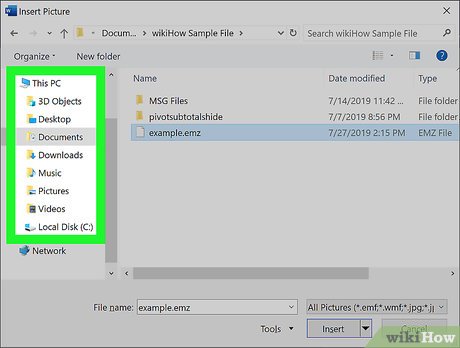
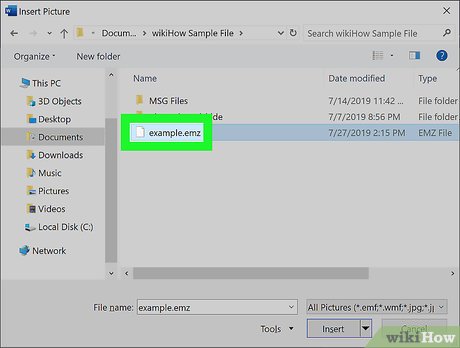



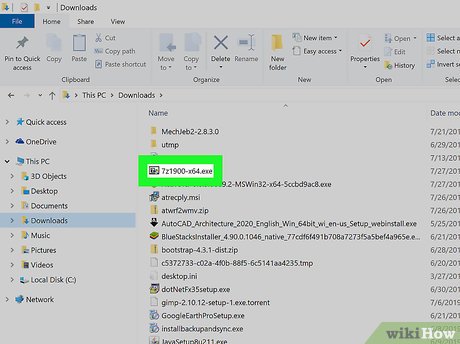













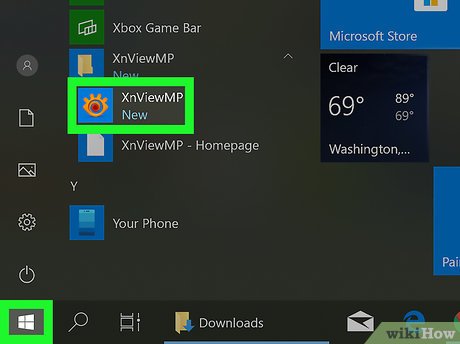




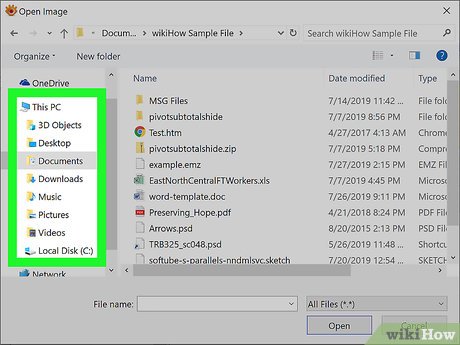



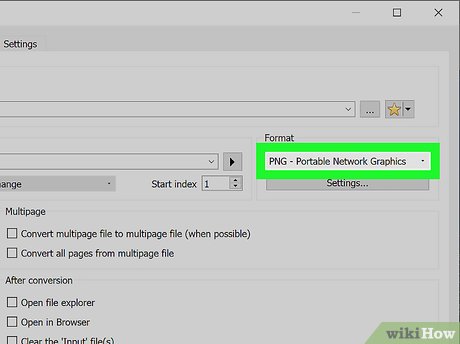











 How to Change the Default Print Size on a Mac
How to Change the Default Print Size on a Mac How to Remove Malware from a Mac
How to Remove Malware from a Mac How to Use Calculator on a Mac
How to Use Calculator on a Mac How to Connect a PC to a Mac
How to Connect a PC to a Mac How to Build a Hackintosh
How to Build a Hackintosh How to Download PC Games on Mac Computers
How to Download PC Games on Mac Computers